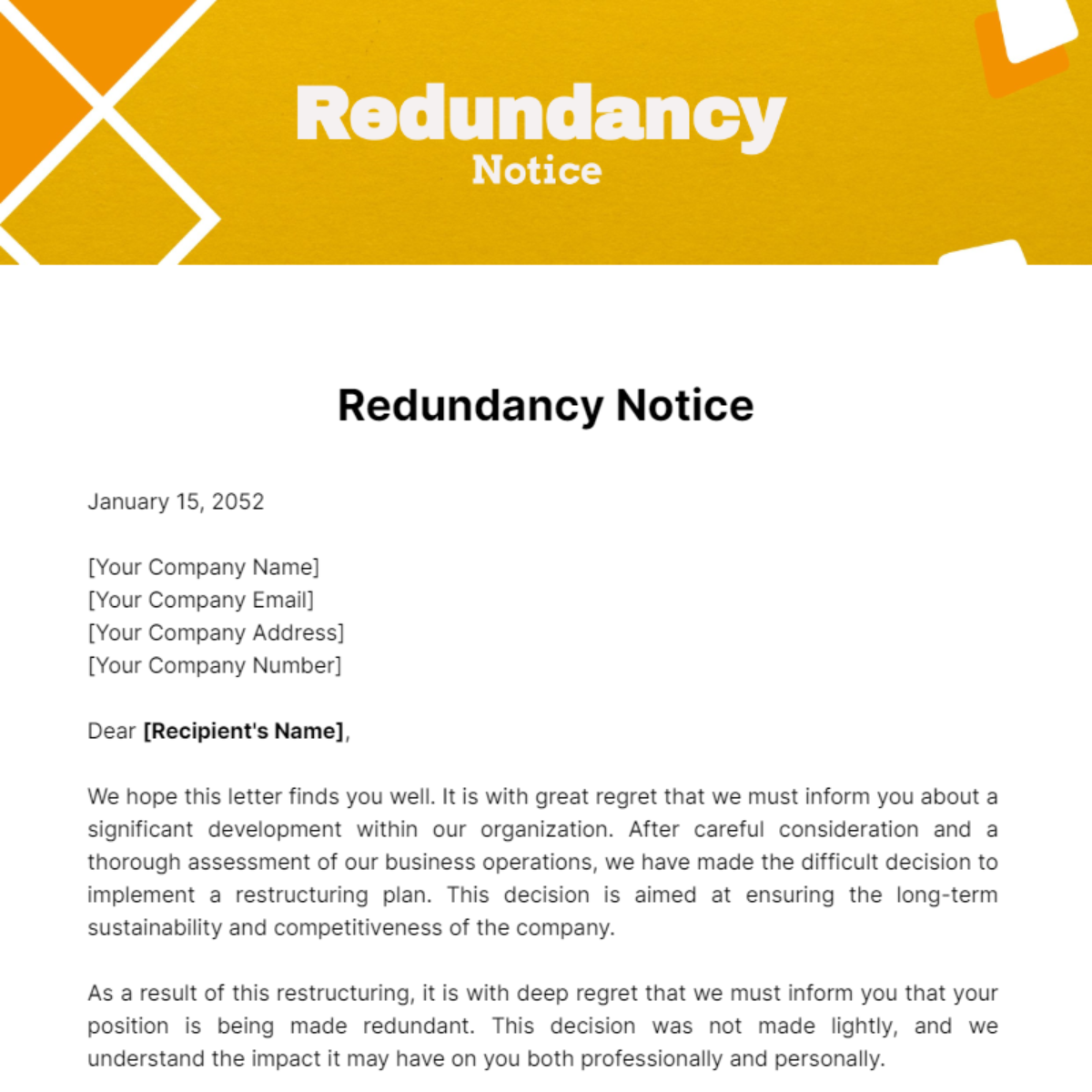Who Pays Redundancy Money? Comprehending Employer Obligations in the UK
Who Pays Redundancy Money? Comprehending Employer Obligations in the UK
Blog Article
Discovering the Operational Dynamics of Business Redundancy and Its Long-Term Sustainability

Redundancy Strategies for Organization Connection
In order to make sure nonstop procedures, organizations should execute reliable redundancy strategies for company continuity. Redundancy in this context refers to the duplication of essential elements or functions within a system to reduce the impact of prospective failings. By integrating redundancy techniques, companies can improve their strength versus disruptions triggered by numerous aspects such as natural catastrophes, devices failings, or cyber-attacks.
One typical redundancy strategy is the implementation of backup systems and data storage options. This entails producing matches of important information and systems that can be triggered in case of a key system failure. In addition, companies can develop repetitive communication networks and power sources to keep connectivity and procedures during unforeseen occasions.
In addition, cross-training employees to perform several roles within the company can function as a useful redundancy technique. This makes certain that crucial jobs can still be accomplished also if key workers are unavailable due to health problem or various other factors. Overall, effective redundancy strategies are necessary for organizations to maintain functional connection and decrease the influence of prospective disruptions.
Effect of Redundancy on Business Strength
Provided the vital duty redundancy methods play in ensuring organization continuity, exploring the effect of redundancy on organizational durability becomes crucial for comprehending the alternative operational dynamics of a firm. Business durability describes an entity's capacity to adapt to interruptions, recuperate from obstacles, and transform when necessary while preserving core features. Redundancy, when purposefully carried out, can significantly add to improving an organization's strength in the face of unforeseen obstacles. By having backup systems, workers, or processes in position, companies can much better hold up against shocks and proceed procedures with very little disruption.
Additionally, redundancy can strengthen employee morale and self-confidence, recognizing that there are contingency strategies in location to address unforeseen situations. This complacency can result in boosted efficiency and an extra positive workplace. Furthermore, redundancy can promote advancement and imagination within an organization as staff members really feel empowered to take calculated risks, knowing that there is a security web to support them in instance of failure. Overall, the impact of redundancy on business durability is extensive, shaping the long-lasting sustainability and success of a company.
Stabilizing Efficiency and Flexibility in Redundancy
Attaining a harmonious balance in between functional performance and adaptive versatility is an essential obstacle in the strategic implementation of redundancy within companies. Also much adaptability without a solid operational foundation can result in ineffectiveness and incongruity.
To balance performance and flexibility in redundancy preparation, companies need to thoroughly evaluate their operational demands, market characteristics, and strategic objectives. Ultimately, locating the right stability between performance and flexibility is essential for constructing a resistant and sustainable organization in the face of uncertainty.
Long-Term Sustainability With Redundancy Planning
To make sure enduring feasibility and stability, organizations must purposefully align their redundancy planning with long-lasting sustainability objectives, consequently integrating operational efficiency with adaptive adaptability. Firms should see redundancy not as a reactive remedy to immediate issues but as an aggressive technique for lasting success.

Aggressive Measures for Lasting Business Workflow
Just how can firms proactively enhance their operational sustainability for long-lasting success? Applying aggressive measures is necessary for companies intending to guarantee sustainable procedures. One essential technique is to purchase technology and innovation to improve procedures, lower waste, and remain competitive in the marketplace. Adopting sustainable techniques such as reducing energy intake, reducing carbon footprint, and optimizing source application can not just benefit the atmosphere yet likewise lead to cost savings in the lengthy run.
Additionally, cultivating a culture of continual improvement and discovering within the organization can boost versatility to transforming market problems and customer demands. Encouraging worker involvement in decision-making processes and offering possibilities for specialist advancement can enhance morale, efficiency, and overall performance. Developing clear goals, keeping track of crucial performance indicators, and routinely evaluating development are vital components of positive sustainability administration.
Collaborating with providers, consumers, and various other stakeholders to promote lasting techniques throughout the supply chain can produce a causal sequence of favorable influence - redundancy pay if company goes click for source bust. By taking aggressive steps towards functional sustainability, firms can build resilience, drive development, and protect their lasting success in an ever-evolving business landscape
Final Thought

In the realm of business administration, the strategic release of business redundancy stands as a crucial yet detailed method that demands a fragile balance between functional performance and long-lasting stability. By exploring the operational dynamics that underpin company redundancy and reviewing its wider implications for organizational strength and flexibility, a nuanced understanding of exactly how redundancy strategies can form the future trajectory of a company starts to Your Domain Name unravel.Given the critical function redundancy approaches play in making sure business connection, discovering the effect of redundancy on business resilience ends up being vital for recognizing the alternative functional dynamics of a business. On the whole, the influence of redundancy on organizational strength is profound, forming the long-term sustainability and success of a company.
In verdict, comprehending the functional characteristics of firm redundancy is crucial for ensuring long-term sustainability.
Report this page